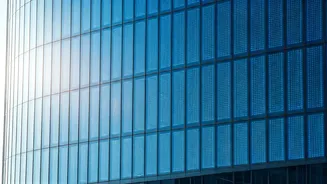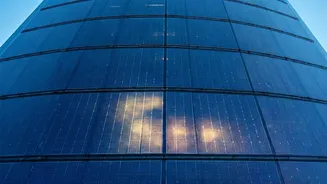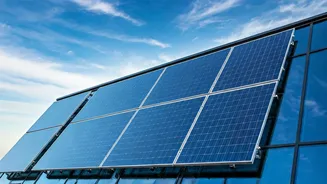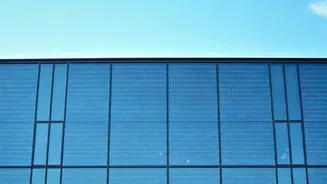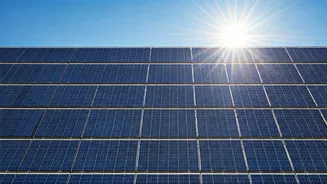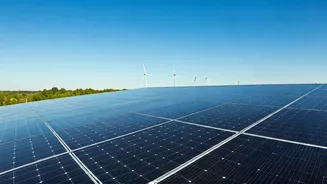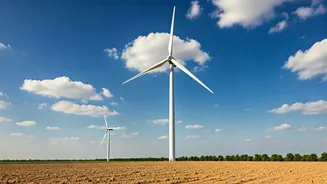Energy-Generating Windows
The field of solar energy is experiencing a significant leap forward, with the advent of semi-transparent solar cells. This innovative technology has the potential
to redefine how buildings interact with the sun, allowing windows and building facades to generate electricity. Researchers are actively working to improve the efficiency and applicability of these solar cells, aiming to create materials that can seamlessly integrate into various architectural designs while harvesting solar power. The development of these cells marks a crucial step toward more sustainable and energy-efficient building practices. This approach not only generates clean energy but also addresses the aesthetic concerns that have sometimes been associated with conventional solar panel installations, paving the way for wider adoption.
Breaking Efficiency Records
Recent advances in semi-transparent solar cell technology have resulted in the achievement of record-breaking efficiency levels. These cells are designed to capture a significant portion of sunlight while maintaining a degree of transparency, making them suitable for integration into windows and other architectural elements. Scientists have been focusing on materials and designs that optimize light absorption and energy conversion without sacrificing visibility. This includes innovative approaches to the composition and structure of the cells, aiming to balance performance with the aesthetic requirements of modern buildings. The focus is to ensure that the cells can efficiently convert sunlight into electricity, improving the overall efficiency of energy production from the building's exterior surfaces.
Transforming Building Facades
The integration of semi-transparent solar cells into building facades represents a significant opportunity to transform urban landscapes. Rather than being passive elements, buildings could become active contributors to the energy grid by incorporating these solar cells into their design. This can be achieved through the application of the cells to windows, glass panels, and other exterior surfaces. By capturing sunlight, these facades can generate electricity that reduces a building's reliance on external power sources, decreasing its carbon footprint and operational costs. This transformation is not only environmentally beneficial but also offers architects and designers new possibilities for creating aesthetically pleasing and energy-efficient structures. Moreover, this could enhance sustainability by promoting innovative construction materials and practices.
A Sustainable Future
The widespread adoption of semi-transparent solar cells promises to contribute significantly to a more sustainable energy future. By enabling buildings to generate their own power, these cells can help decrease dependence on fossil fuels and mitigate the impacts of climate change. As the technology continues to develop, with ongoing efforts to reduce costs and enhance performance, these solar cells are expected to play an increasingly important role in the global transition to renewable energy sources. This technology fosters a circular economy by providing clean energy at the point of use. The integration of solar energy into building design promotes energy efficiency and creates environmentally friendly infrastructure for future generations.
